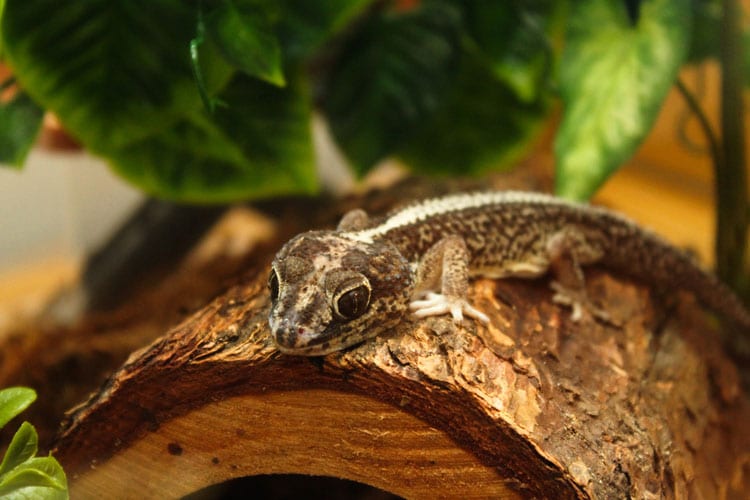Panther Gecko
With Beautiful Patterns a Pleasure to Watch and Handle
The Panther Gecko (Paroedura Pictus), also called Madagascar ground geckos, Ocelot geckos, and pictus geckos is a favorite species of pets today.. The Panther geckos are nocturnal lizards belonging to the Island of Madagascar and live among the felled trees of the forest and the litter of the leaves that lie on the ground. They are very small and will grow to about 6 inches in size and you cannot find similar panther geckos anywhere else.
Panther Geckos, well-known as exotic pets are similar to the leopard gecko, since you do not require any special effort to breed them. They are small ground- dwelling lizards with beautiful body patterns, big eyes and great craving for crickets; the right choice for you.

Anatomy
Pictus geckos sexually occur in two different forms. At a glance you can determine its sex. The males’ possess big heads and conspicuous hemi penal bumps near the vent. The female gecko’s bumps are negligible in size or perhaps they lack it. It is ideal to mate your gecko when they reach a ripe age of 1 year, when you can also figure out the sex.
Habitat

A single Panther Gecko needs a living space of a 10-gallon tank. For each additional gecko you have to add a 5-gallon size. The substrata comprises of paper towel, reptile carpet, mulch or a proportional combination of these. Their hiding places are bricks (hide box) and trees for climbing. You must provide a separate hiding space for each gecko. In order to help with shedding and for humidity, you need to keep one hide box moist.
Diet
These insectivorous Panther Gecko eats all types of insects found naturally in the natural habitats of Madagascar. As for hobbyists, crickets form the main food of the Panther Geckos Crickets are available easily, gut loaded and calcium coated for providing proper nutrition to your gecko in captivation.
Silkworms, small beetles, mealworms and the like, also make good meals for these geckos provided you gut load and calcium dust them before feeding. However, please make sure that the feed size does not exceed the distance between the two eyes of the gecko.
Though the nocturnal geckos like leopard, pictus and the like do not need UVB, still you have to supply a light source for their routine affairs at day and night. One 75-watt reptile day light bulb will suffice for 12 hours. Then switch on the infrared 75-watt bulb during the night. You derive pleasure seeing them at night amidst these night bulbs.
A 75-watt reptile daylight bulb combined with a designated heat lamp is ideal for providing heat and light for them. The fixture on the lamp shows the upper limit of wattage the bulb can sustain. Avoid low Voltage lamps and desk lamps as they explode on overheating and are likely to catch fire.
Breeding
Panther Geckos are an abundantly productive species. On being fully developed, you are able to perceive a male form a female by the small bumps they have on the hind side near the tail end. After fertilization, a female lays 2-3 eggs every week. They hatch the young ones after 60 days. Female geckos have the clear ability to withhold sperms internally. Hence, they lay eggs in a limited number several times every 14 days.
Handling
These beautiful Panther geckos, with their beautiful patterns, are a pleasure to watch, and handle if you can exercise extreme care, Never hold them by the tail, or it can come off, though they grow again, but not to the original shape, Because of their slender legs, you must take great care and handle them very daintily. They are also very reclusive by nature, and nocturnal, but the females seem more active than the males. When young, they are very jumpy, but tend to become docile as they age.

Having discovered a fondness for insects while pursuing her degree in Biology, Randi Jones was quite bugged to know that people usually dismissed these little creatures as “creepy-crawlies”.







